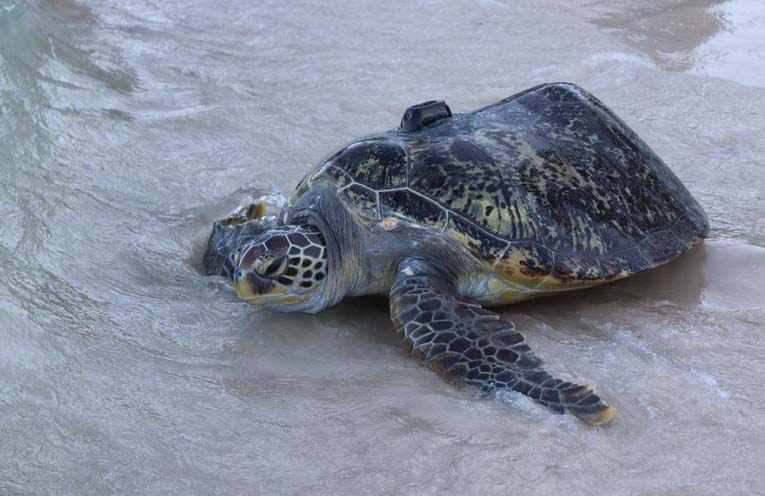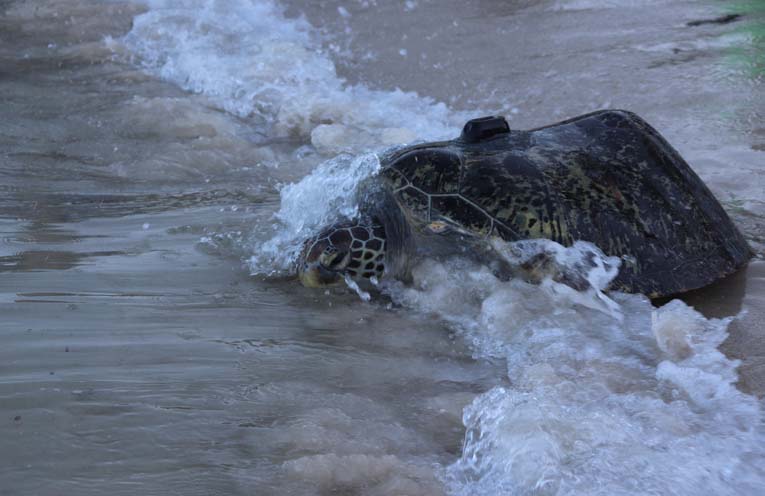
TWO and a half years ago a badly injured Green Sea Turtle washed up on the mud flats at Lemon Tree Passage.
Many thought she was beyond help.
 Advertise with News of The Area today.
Advertise with News of The Area today.It’s worth it for your business.
Message us.
Phone us – (02) 4981 8882.
Email us – media@newsofthearea.com.au
Last week after many hours of painstaking care, Beryl was released back into Port Stephens.
The team at the not-for-profit Sea Shelter’s new hospital for marine life were Beryl’s saviours.
Led by marine biologist Ryan Pereira, Beryl was treated for a range of medical conditions and it was clear from her badly damaged carapace that Beryl had been hit by a boat or jet ski.
After many tube feeds and months of nurturing the 81 kilogram turtle, Beryl has been given a shot at freedom back in her home.
Beryl’s injuries mean that she has a tendency to float.
Her buoyancy system doesn’t automatically work until she gets to a depth of around five metres.
Because releasing Beryl is risky due to her inability to stay underwater easily, she has been fitted with a tracking device.
“The device cost around $5,000 to purchase and there are ongoing costs for the monitoring of Beryl which can be seen online,” Ryan Pereira told News Of The Area.
“If we see that Beryl isn’t managing to stay healthy and stay underwater, we will go and collect her.”
Beryl’s tracker will stay on her carapace for around three months at which time it will be shed.
“We really hope that we will be able to recover the device for future monitoring of other newly released turtles,” Ryan said.
Beryl was released by carers and wellwishers at Nelson Bay Beach.
Also released at the same time was a juvenile Green Sea Turtle which has been in care at Sea Shelter at Irukandji Shark Encounters for around one month.
Sea Shelter depends upon volunteers and donations to conduct their rescue and rehabilitation programs for a range of marine animals.
According to the World Wildlife Fund (WWF), the green turtle is one of the largest sea turtles and the only herbivore among the different species.
“Green turtles are in fact named for the greenish colour of their cartilage and fat, not their shells,” a WWF spokesperson said.
“In the Eastern Pacific, a group of green turtles that have darker shells are called black turtles by the local community.
“Green turtles are found mainly in tropical and subtropical waters.
“Like other sea turtles, they migrate long distances between feeding grounds and the beaches from where they hatched.
“Classified as endangered, green turtles are threatened by overharvesting of their eggs, hunting of adults, being caught in fishing gear and loss of nesting beach sites.”
The Green Sea Turtle sits in the same precarious endangered position as the koala in our region, an endemic species that sadly, because it isn’t as visible, does not attract the same funding to save the species.
By Marian SAMPSON


